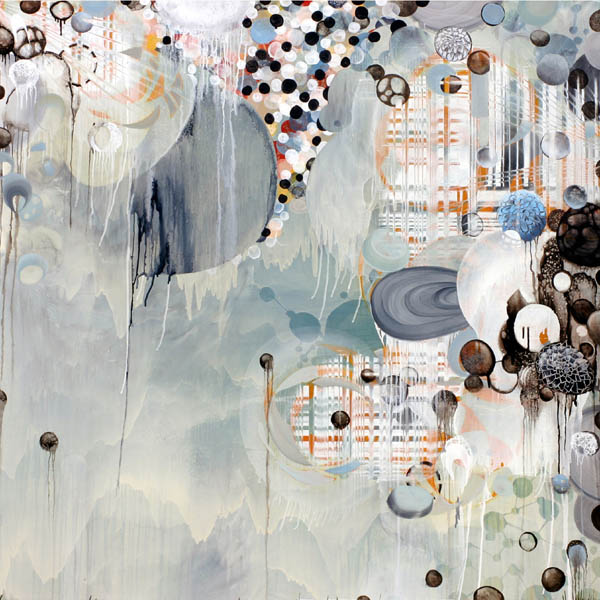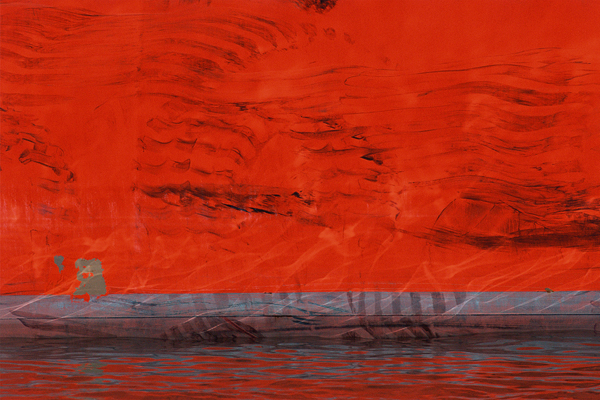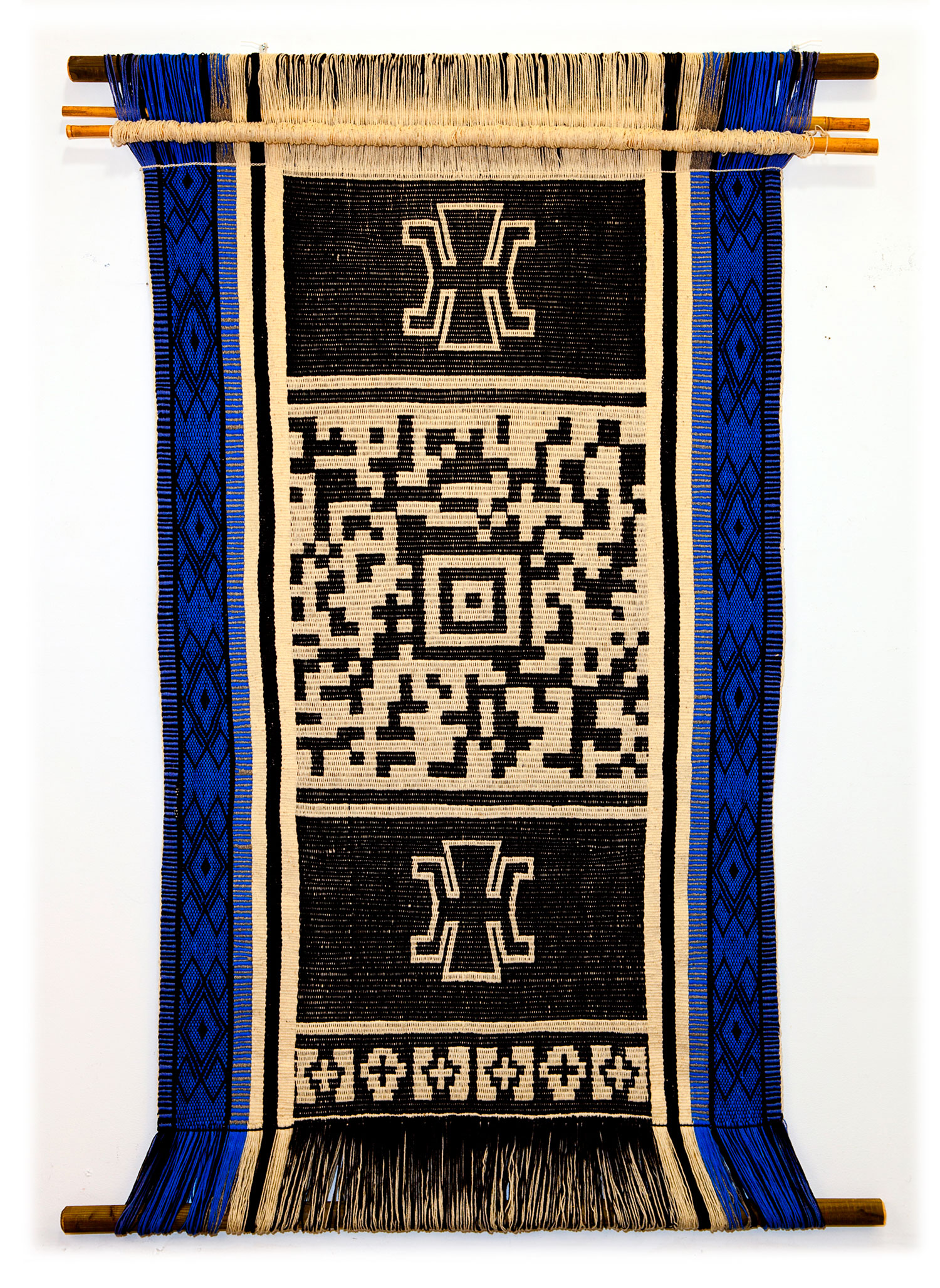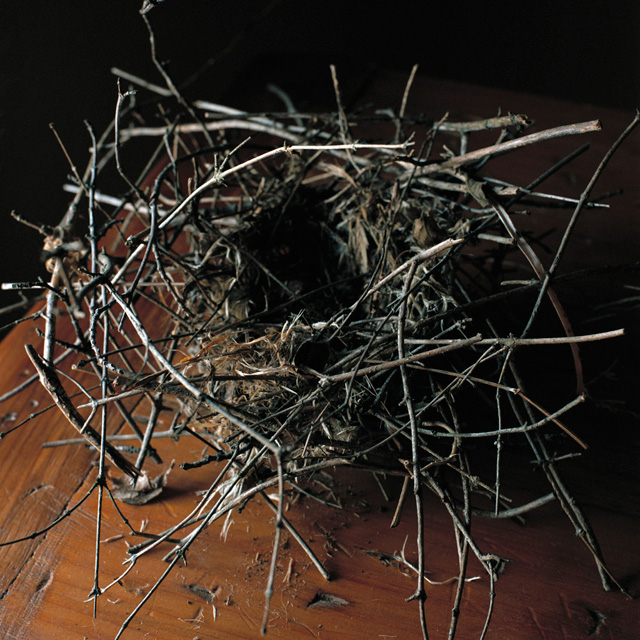

Helen Rebekah Garber: Spells, Spires and Other Delicate Business | Transformation through obsession and the examination of reverence are the central underpinnings of the work; an examination that mounts through the manipulation of layering and patterning within each painting. By drawing upon the idea of reverence within the boundaries of the canvas, and guided by intuition, the concentration of mark making infuses the work with energy and confers unto each piece a distinct presence.
The patterning that composes each image is sourced from both Eastern and Western aesthetic traditions: Paleolithic and Neo-Paleolithic fetish objects, West African ceremonial masks, Greek Icon painting, Italian and Northern Renaissance altarpieces, Jewish ceremonial textiles such as Tallit and Torah arks, Islamic prayer rugs, alchemical diagrams and geometric references to mathematical equations. By decoding and re-purposing the source material into the skeleton of each painting's structure, a contemporary devotional figure emerges as a central mass, allowing the reference points to both meld and compete with each other. Originally vibrantly colored, the final "skin" of white paint ties compositional elements together and is symbolic of a state of balance or equilibrium.

Aaron Petersen: Memory | Petersen brings together a series of paintings that offer windows into painterly environments inspired by human experience and the unseen worlds that surround us. Observation, memory, nature and invisible systems and energies all inform his lush oil paintings that meld abstraction and figuration. In his paintings, an ethereal, playful sense merges with the impression of a percolating maelstrom, evidenced in both his palette and manipulation of paint. Fastidious markings move over gauzy, colored grounds where dripping, floating and diaphanous forms meld with grid-like structures. Tight, sweeping lines and whirring, effervescent dots mingle with voluminous shapes in scenes that resonate with notions of urban grids, plant and sea life or cellular bodies floating in an otherworldly atmosphere. Petersen's aggregate worlds are shaped by navigating forces of chaos and control. These opposing energies drive his formal vision and the philosophical groundwork of his practice.

Gil Mares: Up Close | Having photographed cargo freighters for over 10 years, Mares' work exposes the visual secrets kept by these ships. Ordinarily observed at a distance, Mares reveals their beauty through his photography by eliminating this distance. The brightly painted hulls exhibit interesting patterns and textures, which are reflected in the water. They may appear massive and strong, but the scrapes, gouges, rubber marks, and rusting wounds belie a certain frailty. The photographs expose an exquisiteness of these ships in juxtaposition with their industrial purpose by illuminating the ship's hidden journey. The artist gets up close and personal with his subjects, which "seem as great whales with battle scars that record their life-long struggle to survive," says Gil Mares. He uses composition, color, texture, depth, and detail to illuminate the subject, remove all other distractions and invites contemplation.

Guillermo Bert: Encoded Textiles | In an excerpt from the exhibition catalogue, Peter Frank writes, "Guillermo Bert has based his elaborate project on a simple, if imposing, premise: human technology, however used, measures humanity -- all humanity, not just specific civilizations responsible for specific devices.
The Digital Age has found its way into regions of the globe largely untouched by the Mechanical Age before it. Throughout the Third World, computers sit in schoolrooms that never saw typewriters, cellphones buzz where telegraphs were unimaginable, MP3 files play where LPs never did. The poor, the earthbound, and the indigenous, long the subjects (not to mention victims) of advanced technology, are now its confident operators. In his series of Encoded Textiles Guillermo Bert symbolizes, even embodies, this newfound mastery by collapsing traditional and newly invented methods of communication into one another."

Wendy Burton: Natural Histories | In a previous body of work entitled Trace Elements, Burton photographed remnants of human life left behind in the natural landscape. With Empty Houses and Rust Belt, she continued her exploration of abandoned spaces, both domestic and industrial. Natural Histories continues the theme of once inhabited dwellings with photographs of deserted bird nests. Burton notes that each nest is "a small miracle of architecture and engineering... each somehow perfect, even in its imperfection." This project also includes images of animal skulls, crustacean casings, snake skeletons and other remnants of once living creatures, further developing her investigations into "that which is left behind." All of the subject matter is photographed as a singular object, on a wooden table, within a relatively dark interior lit by a single source of natural light. They are still-lifes in the tradition of memento mori, but more importantly, they reflect the artist's reverence of natural form and meditations on how these forms were shaped by instincts and evolution.
For the most comprehensive calendar of art events throughout Los Angeles go to Artweek.LA.